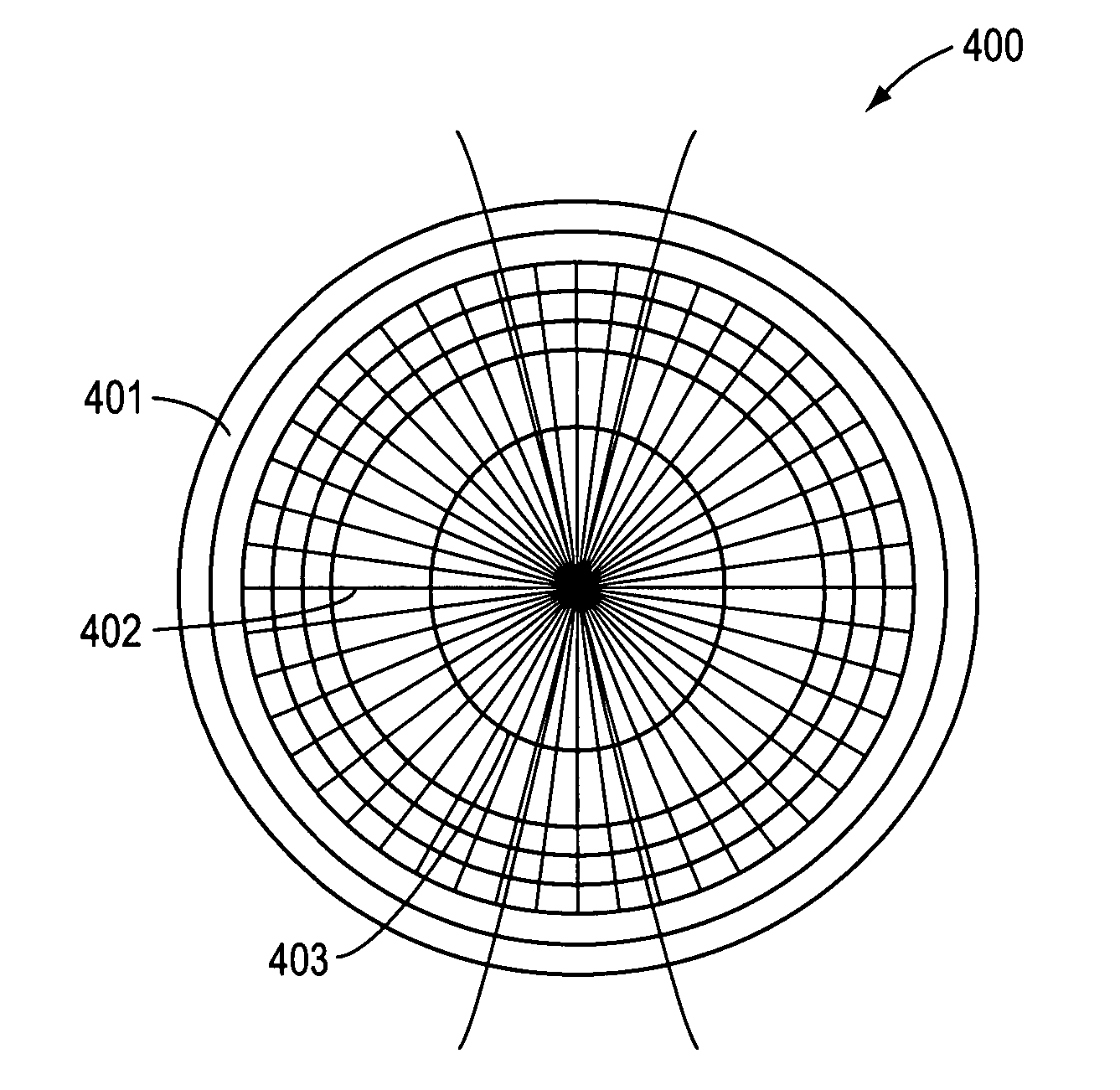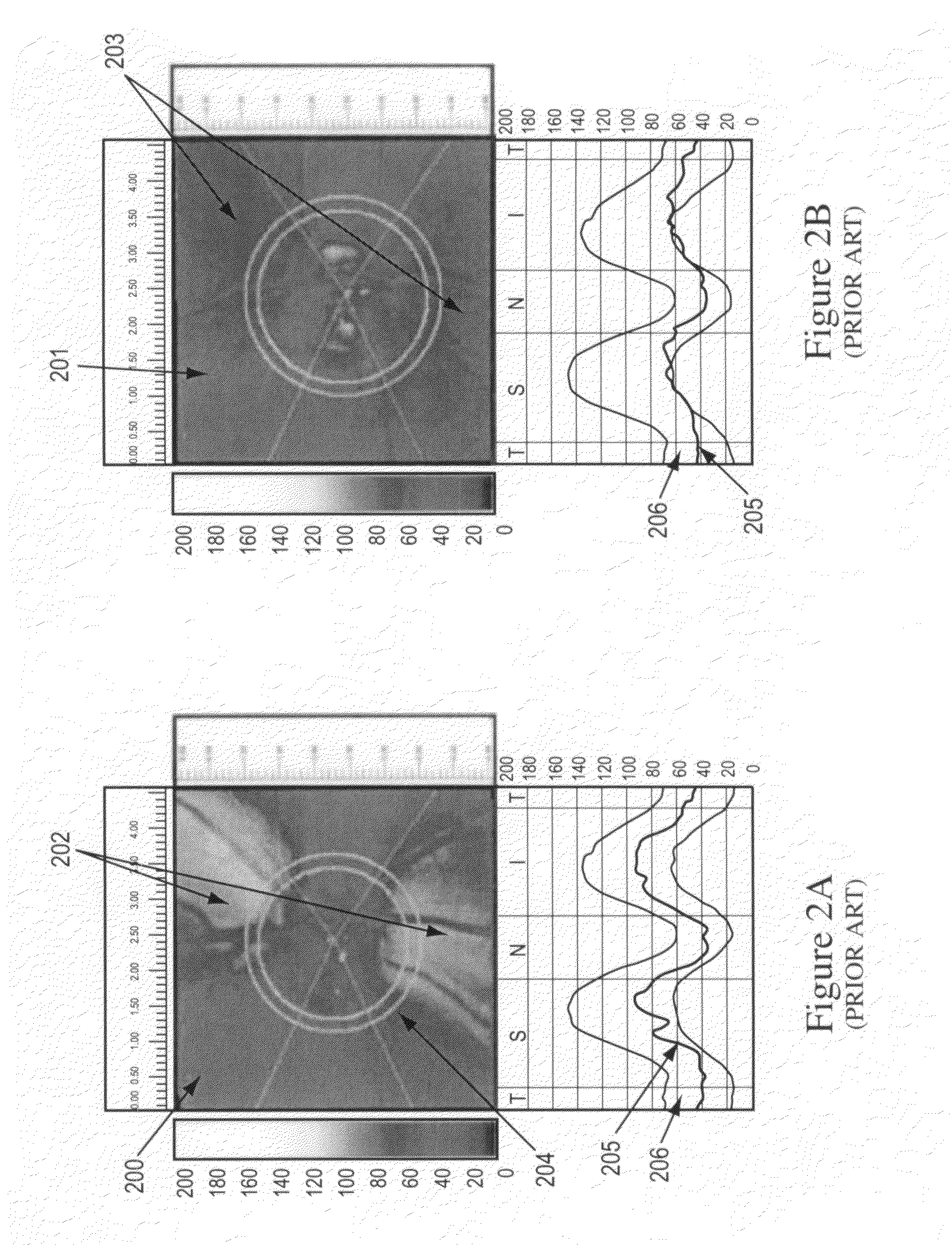Method of eye examination by optical coherence tomography
a tomography and optical coherence technology, applied in image analysis, medical science, diagnostics, etc., can solve the problems of limited ability to sufficiently map the optic nerve layer, inability to see the choroid layer, and inability to provide qualitative interpretation of eye structural changes
- Summary
- Abstract
- Description
- Claims
- Application Information
AI Technical Summary
Benefits of technology
Problems solved by technology
Method used
Image
Examples
Embodiment Construction
[0029]Embodiments of the current invention can be utilized for evaluating the eye tissue structure for diagnosing eye diseases. Some embodiments utilize an Optical Coherence Tomography (OCT) image, a fundus image, and an algorithm associated with both image modalities to map out the eye tissue structure accurately. Some embodiments of the invention provide an image of the eye tissue structure substantially absent of artifacts caused by eye motion or image distortion caused by light absorption of the retinal blood vessels. The current disclosed eye examination methods can be utilized in the diagnoses of eye pathologies in the optic nerve head, for example Glaucoma.
[0030]As discussed above, diagnosis of retinal eye pathologies depends on accurate and complete imaging of the nerve head area. Images of the nerve head area are shown in FIGS. 1A, 1B, 2A, 2B, and 3. FIGS. 1A and 1B were acquired with the HRT technique, FIGS. 2A and 2B were acquired with the GDx Technique, and FIG. 3 was ac...
PUM
 Login to View More
Login to View More Abstract
Description
Claims
Application Information
 Login to View More
Login to View More - R&D
- Intellectual Property
- Life Sciences
- Materials
- Tech Scout
- Unparalleled Data Quality
- Higher Quality Content
- 60% Fewer Hallucinations
Browse by: Latest US Patents, China's latest patents, Technical Efficacy Thesaurus, Application Domain, Technology Topic, Popular Technical Reports.
© 2025 PatSnap. All rights reserved.Legal|Privacy policy|Modern Slavery Act Transparency Statement|Sitemap|About US| Contact US: help@patsnap.com



